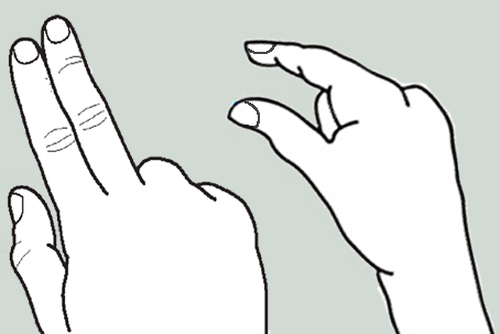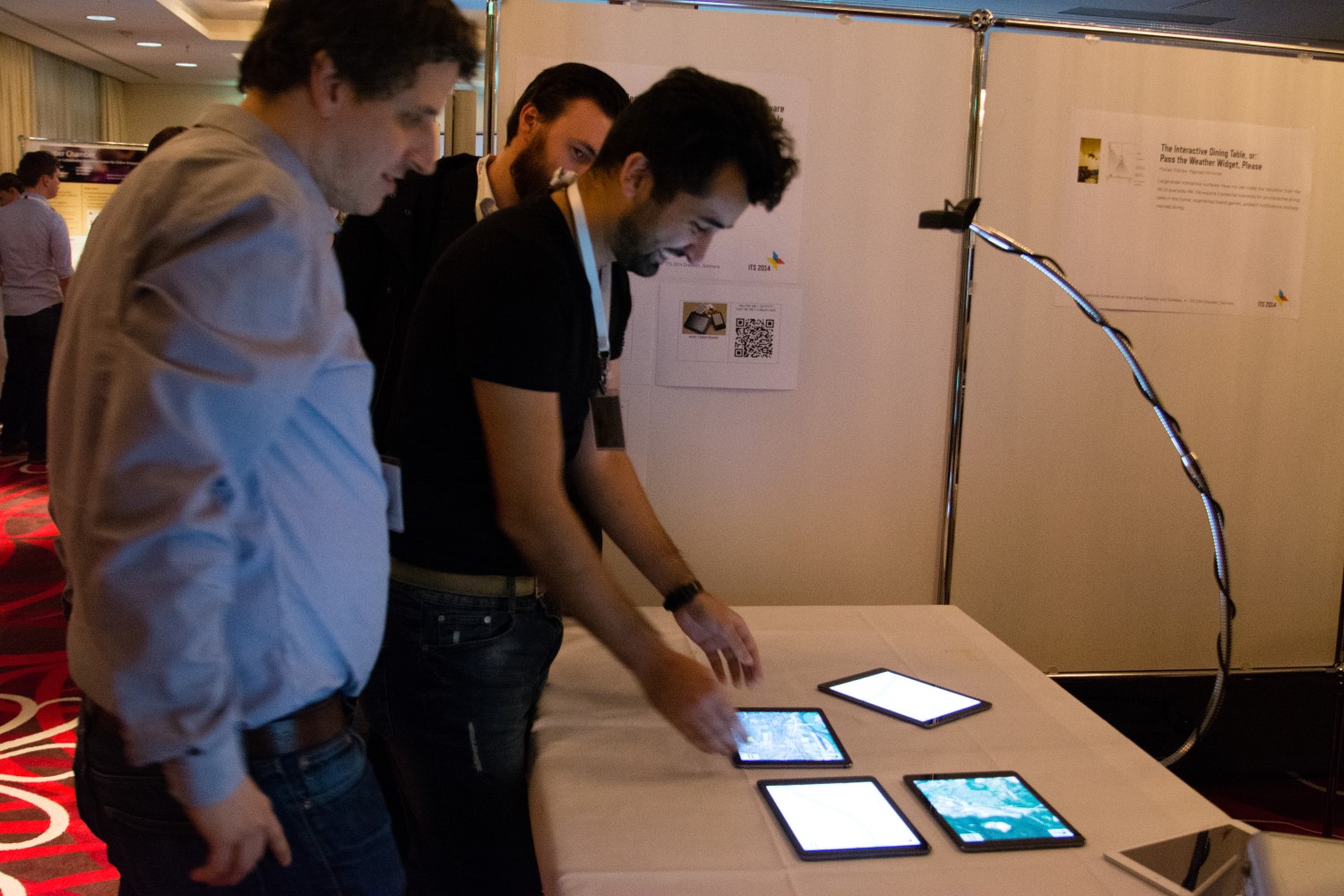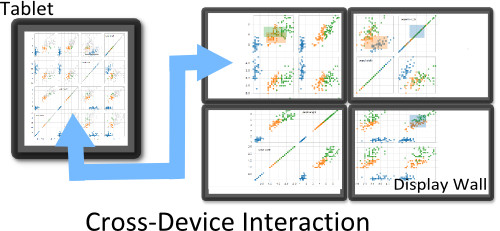Download a copy of the printed program booklet here:
Get the introductory, session & award slides here:

...Click this button to get free pdf access until Nov 2015 provided by ACM OpenTOC service.
9:00 - 12:30
Workshops, Tutorials, Studios and Doctoral Symposium
Morning Session (with coffee break from 10:30 - 11:00)
Lunch Break
14:00 - 17:30
Workshops, Tutorials, Studios and Doctoral Symposium
Afternoon Session (with coffee break from 15:15 - 15:45)
19:00 - 22:00
Welcome Reception at Pulverturm an der Frauenkirche
9:00 - 9:15
Conference Opening by General and Program Chairs
Download chairs' welcome slides here!
9:15 - 10:15
Opening Keynote by Jun Rekimoto
Coffee Break
11:00 - 12:00
Session 1: Gestures
Chair: Andy Wilson
Exploring Narrative Gestures on Digital Surfaces 
Mehrnaz Mostafapour, Mark Hancock
This work investigates narrative hand gestures used on digital surfaces while interacting with virtual objects to narrate a story. We found that narrative gestures are fundamentally different than traditional gestures used to interact with on-screen objects. Narrative gestures are used to communicate visual meaning to an audience.
Web on the Wall Reloaded: Implementation, Replication and Refinement of User-Defined Interaction Sets 
Michael Nebeling, Alexander Huber, David Ott, Moira Norrie
This paper replicates Morris's Web on the Wall guessability study first using Wizard of Oz for multimodal interaction elicitation around Kinect. To obtain reproducible and implementable user-defined interaction sets, the paper argues for extending the methodology to include a draft of the system for mixed-initiative elicitation with real system dialogue.
User-defined Interface Gestures: Dataset and Analysis 
Daniela Grijincu, Miguel A Nacenta, Per Ola Kristensson
We present a video-based gesture dataset, a taxonomy, and a methodology for annotating video-based gesture datasets. We design and use a crowd-sourced classification task to annotate the videos. The results are made available through a web-based visualization that allows researchers and designers to explore the dataset.
Lunch Break
13:45 - 15:00
Session 2: Hardware, Sensing and Frameworks
Chair: Jason Alexander
A Survey on Multi-touch Gesture Recognition and Multi-touch Frameworks 
Mauricio Cirelli, Ricardo Nakamura
We present a survey on touch-based gestures recognition techniques and frameworks. We propose an extended set of requirements such techniques and frameworks should meet in order to provide better support to multi-touch applications. Gestures may be described formally or by user-provided examples. Frameworks integrate the multi-touch sensors drivers to the application and may use different gesture recognizers.
HuddleLamp: Spatially-Aware Mobile Displays for Ad-hoc Around-the-Table Collaboration 
Roman Rädle, Hans-Christian Jetter, Nicolai Marquardt, Harald Reiterer, Yvonne Rogers
Uminari: Freeform Interactive Loudspeakers 
Yoshio Ishiguro, Ali Israr, Alex Rothera, Eric Brockmeyer
Multi-push Display using 6-axis Motion Platform (Note) 
Takashi Nagamatsu, Masahiro Nakane, Haruka Tashiro, Teruhiko Akazawa
Coffee Break
15:30 - 16:10
Poster and Demo Madness Session
16:10 - 17:10
Session 3: Surfaces for Geo-Applications
Chair: Harald Reiterer
Multi Surface Interactions with Geospatial Data: A Systematic Review 
Zahra Shakeri Hossein Abad, Craig Anslow, Frank Maurer
Even though Multi Surface Environments (MSE) and how to perform interactions in these environments have received much attention during recent years, interaction with geospatial data in MSEs is still limited. To summarize the earlier research in this area, this paper presents a systematic review of MSE interactions with geospatial data.
The Effects of View Techniques on Collaboration and Awareness in Tabletop Map-Based Tasks 
Christophe Bortolaso, Matt Oskamp, Greg Phillips, Carl Gutwin, Nicholas Graham
We report on two studies to understand the effect of view techniques on collaboration and awareness. We first studied the performance of view-techniques on spatial arrangement to understand by how much different view configuration affect group performance in mixed-focus tasks. Then we studies how do people choose to configure their environment when working in a realistic mixed-focus activity.
Spatial Querying of Geographical Data with Pen-Input Scopes 
Fabrice Matulic, David Caspar, Moira Norrie
This work presents pen-based techniques to annotate maps and selectively convert those annotations into spatial queries to search for POIs within explicitly input or implicit scopes (areas and paths). We further provide pen gestures to calculate routes between multiple locations. A user evaluation confirms the potential of our techniques.






















































